目次
Craft Report
Marunao Seitosho: A Porcelain Kiln with Over 120 Years of History in Mino Ware.
Founded around 1900 in Toki City, Gifu Prefecture, a region famed for Mino ware, Marunao Seitosho is now run by its sixth-generation successor, Masataka Okuda. After graduating from junior college, Okuda worked for five years at a ceramics trading company in Tajimi before returning at age 27 to train in the family business.
The hallmark of Marunao Seitosho is its ultra-thin, lightweight porcelain—so thin that light passes through and liquids appear translucent when held to the light. At the time of its founding, thin porcelain was highly prized in Europe, and the kiln became known for producing delicate export teacups, a tradition that continues today.
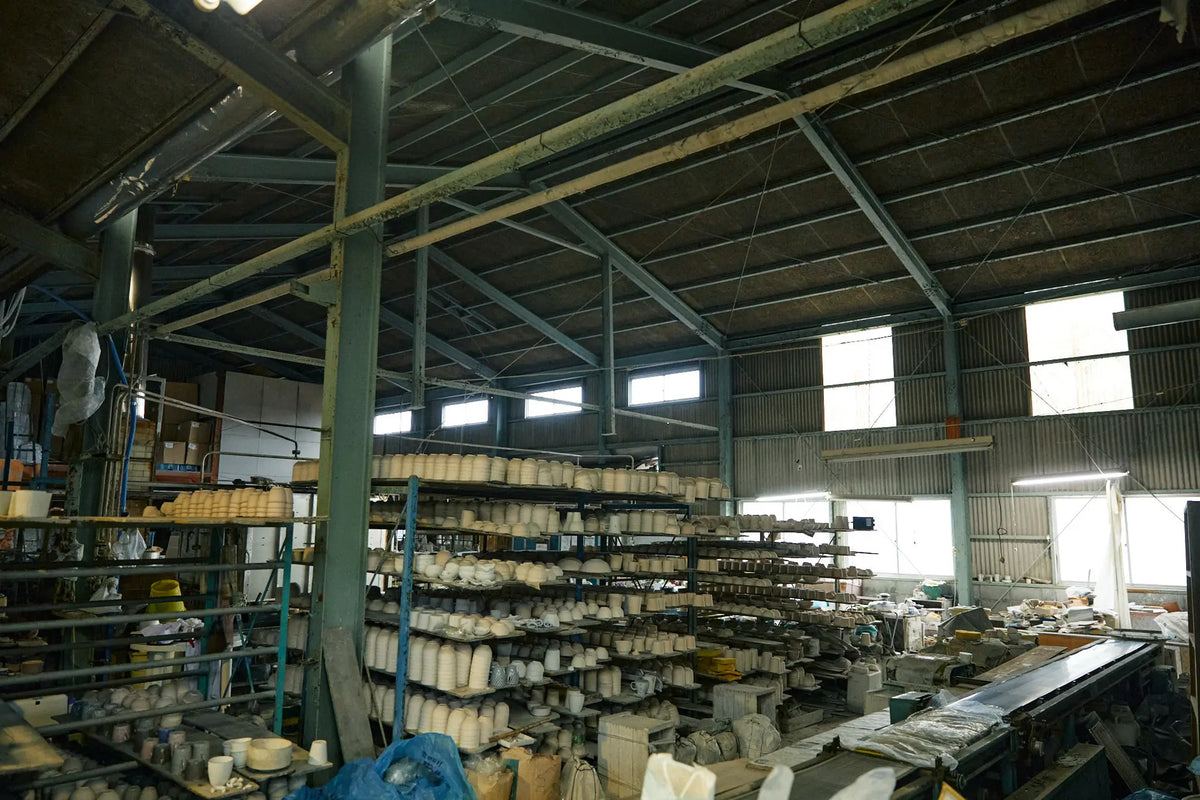

Sixth-generation successor, Masataka Okuda.
Eggshell Porcelain: The Fruit of Skill and Patience.
Marunao’s prized thin porcelain descends from the highly advanced export wares made in Japan from the Edo to Meiji eras. So thin and delicate yet durable, this “eggshell ware” was admired in the West aseggshell porcelain. Today, only two kilns—including Marunao—still produce this style. Pieces measure just 1–2 mm thick and in their bisque state can break under the slightest pressure.
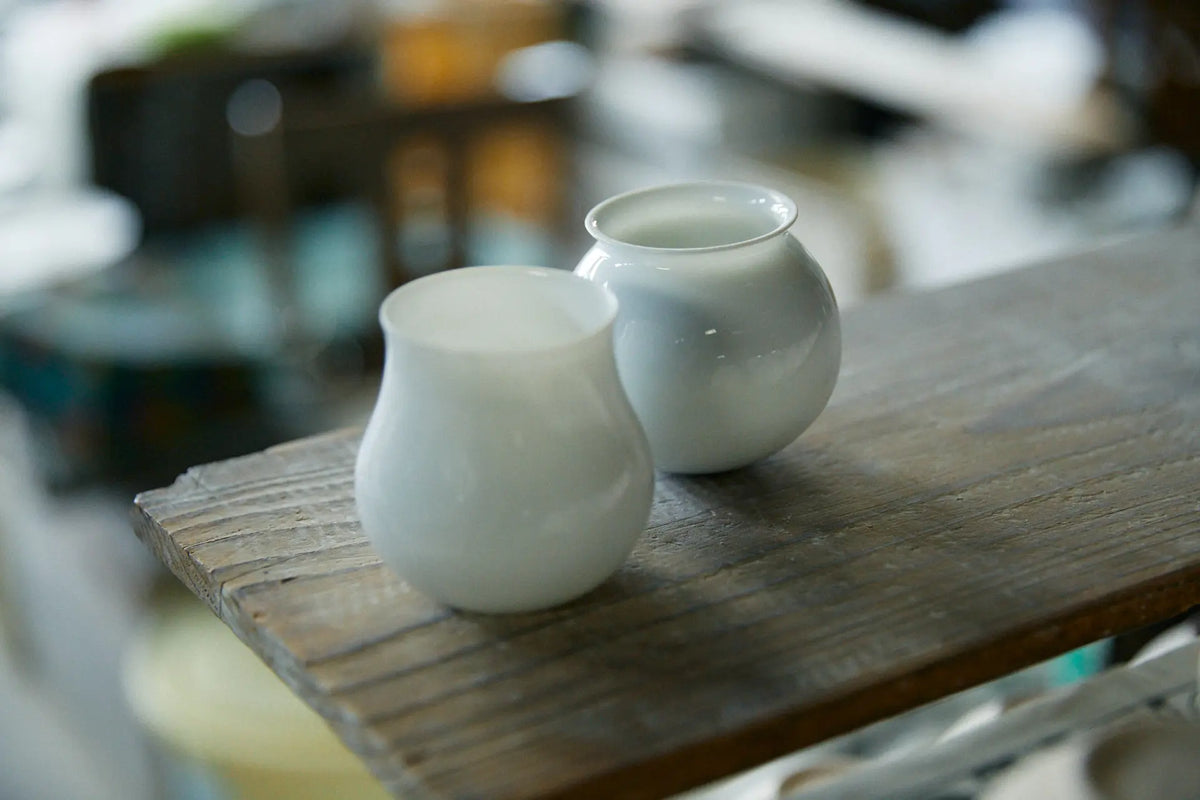
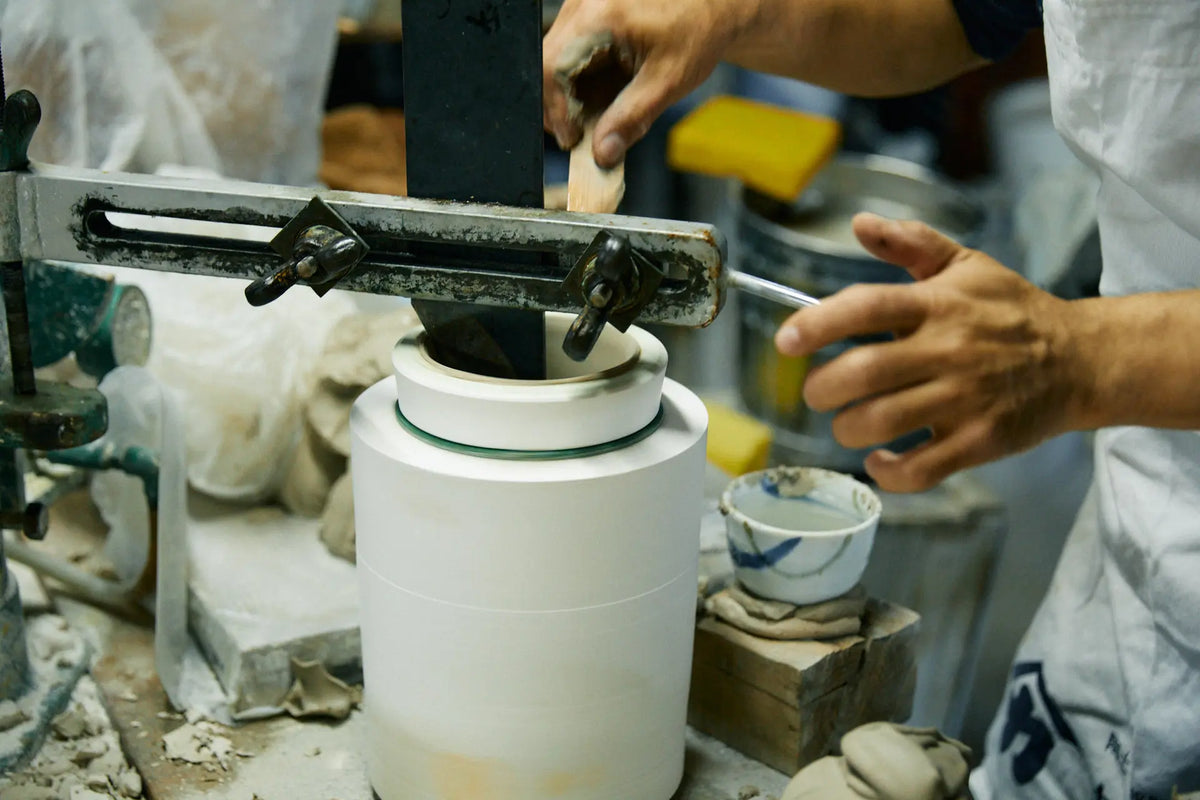
A well-worn spatula used to thin vessels to the extreme.
Maintaining such thinness requires both great skill and time. As local clay deposits dwindle, new clay from other regions must be adapted to, with subtle adjustments made to forming tools depending on its consistency. Even glazing is different: while standard porcelain can be dipped at once, Marunao’s paper-thin ware must be glazed inside and outside separately, as it cannot absorb glaze all at once. From start to firing, the process takes at least two months. The result: vessels so thin that, when sake is poured in, the shimmering surface can be seen through the porcelain, while the rim delivers a smooth, mellow taste.
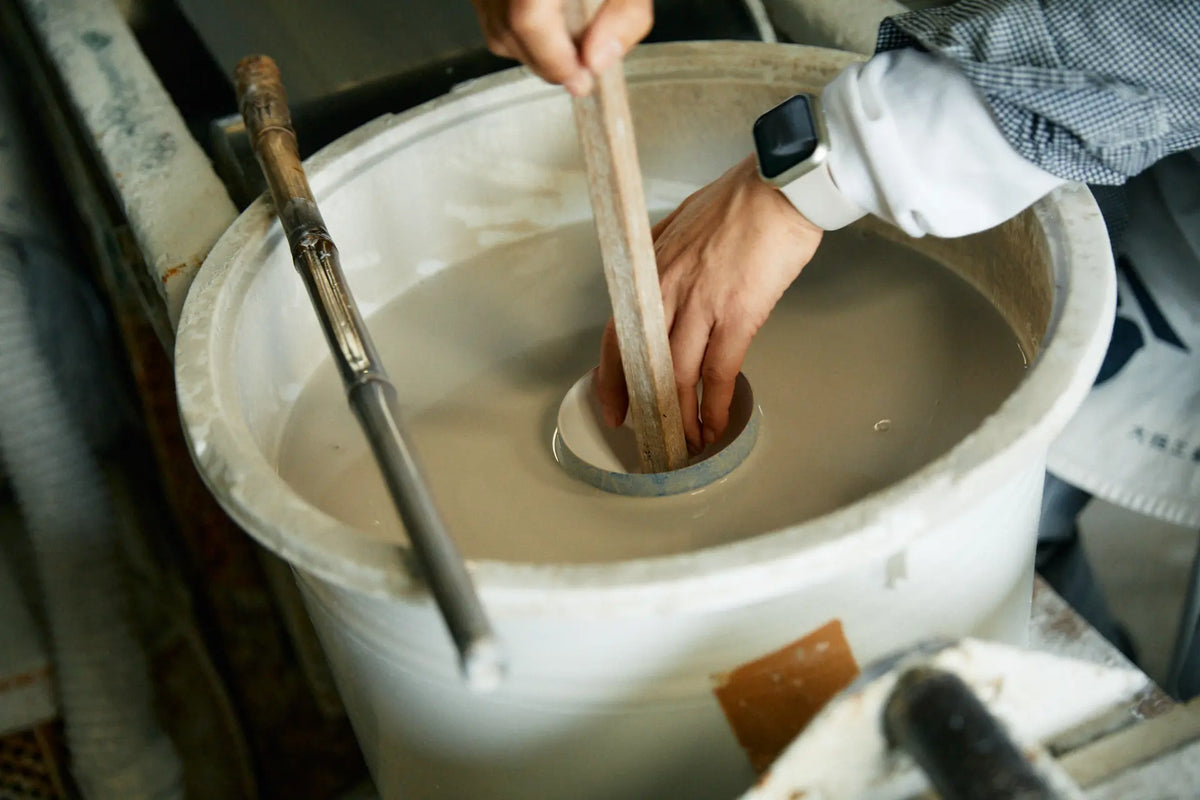
Glazing is applied carefully, one side at a time.
Copperplate Transfer: Achieving Delicate Designs.
Another specialty of Marunao is dōban sometsuke (copperplate transfer printing), where patterns etched into copperplates are printed onto washi and transferred onto the porcelain. This method allows intricate, delicate designs, from fine patterns to even lifelike portraits.
The process: (1) etch the design into copperplate, (2) ink the plate and print onto washi, (3) attach the washi to the porcelain and fire at 700°C, where the clay absorbs the ink as the washi burns off. The workshop has long used traditional Mino washi for this step. After transfer, a final glaze is applied and the piece is fired again at 1300°C. Though imitations exist in China and Vietnam, they lack the refinement and precision of Marunao’s technique.
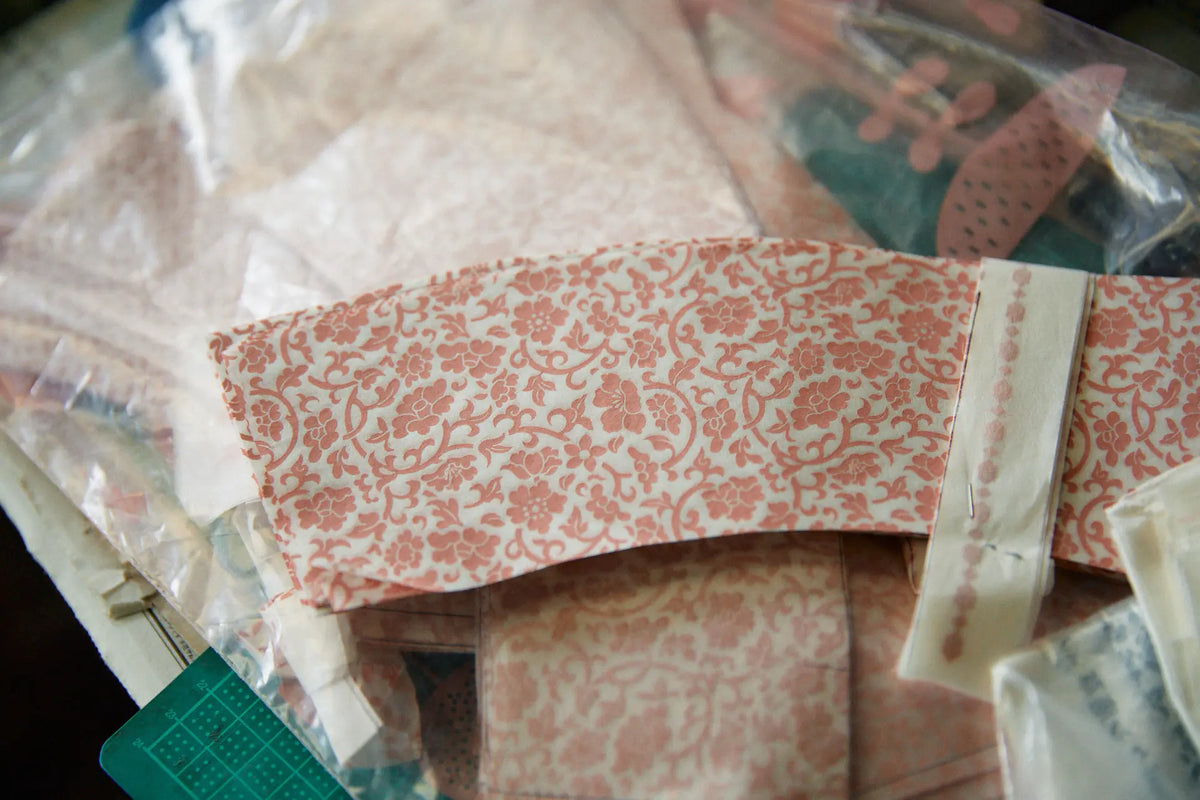
Washi used for transfer.
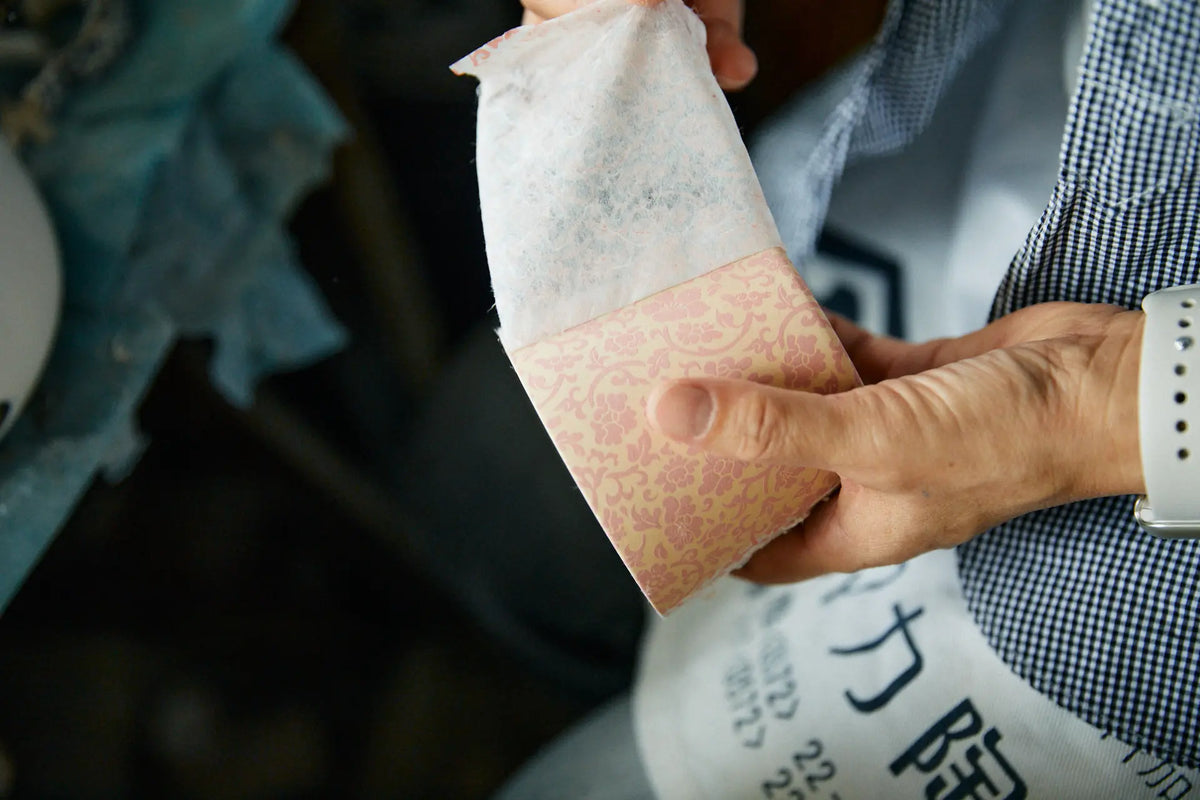
Applying and peeling the washi to transfer the pattern.
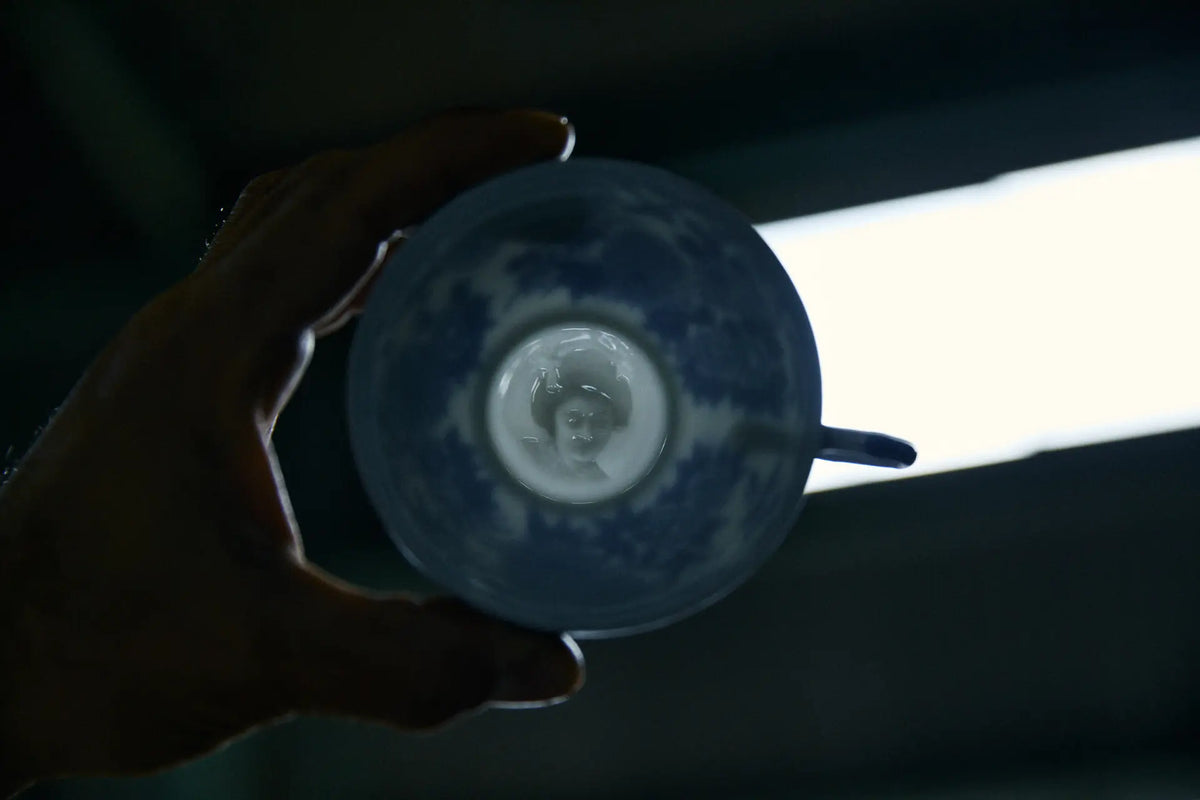
A piece with a portrait transferred to its base—visible when held to the light.
Pioneering New Creations with Advanced Technique.
Okuda is expanding beyond the classic cups and tableware that have been the kiln’s staples for 140 years, now developing sake vessels that highlight the ideal mouthfeel made possible by their thin porcelain. “The secret to our wares isn’t just thinness—it’s the drinking rim,” he explains. By adjusting the rim to be slightly smaller in diameter and thickness than the body, it gently opens during firing under its own weight, creating a refined mouthfeel.
At international trade shows such as Maison & Objet in Europe, Okuda has witnessed both recognition of Japanese quality and the rise of global competitors, spurring him to create new, original products of the highest standard. In addition to traditional wares, he is actively working on new product concepts.
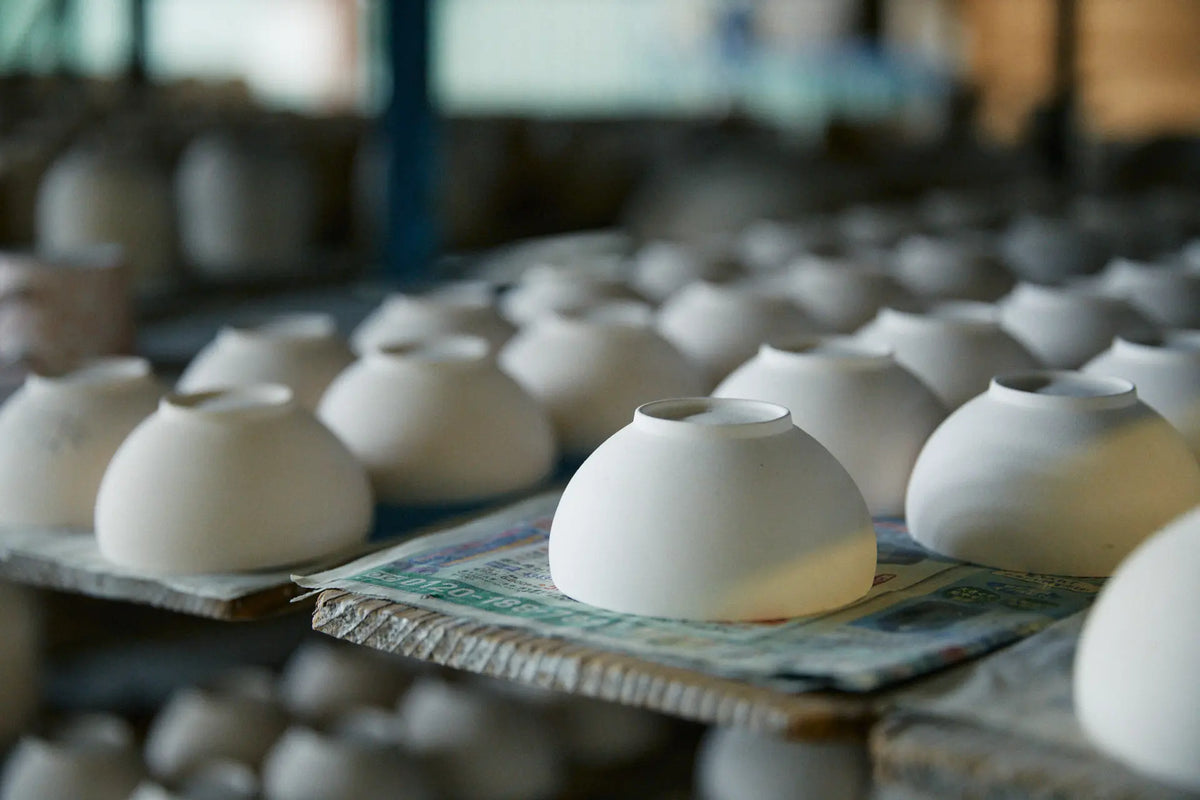

“What makes me happiest is when a customer writes to say they’re glad they bought our work—or when I see the surprise on their face as they hold a piece and exclaim, ‘It’s so light!’” says Okuda. Recently, he has also begun exploring sustainability: “If a piece breaks, I’d like to encourage customers to repair it with kintsugi so they can keep using it for years.”
Driven by a passion for innovation and a vision of sustainability, Marunao Seitosho continues to create new products that lead the world while preserving the artistry of its delicate eggshell porcelain.
Interview: Takuya Arata Photography: Daiki Morishita Text: Emiko Shimono





